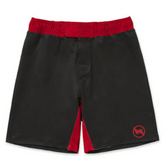Jiu-Jitsu vs Kung Fu: Which Martial Art Is More Effective in a Fight?
When it comes to martial arts, the debate between Brazilian Jiu-Jitsu (BJJ) and Kung Fu is one of the most fascinating. Both arts have rich histories, devoted followers and distinct philosophies. But when the conversation turns toward effectiveness in a real fight, the conversation becomes more technical, practical and sometimes controversial. In this detailed comparison, we will break down the strengths and weaknesses of BJJ and Kung Fu. We will evaluate their impact in MMA (Mixed Martial Arts) and assess which art truly holds the upper hand when it comes to self-defense and combat efficiency.
Understanding the Core of Each Martial Art
What is Brazilian Jiu-Jitsu (BJJ)?
Brazilian Jiu-Jitsu, often abbreviated as BJJ, is a ground-based grappling martial art. It focuses on submission holds, joint locks, and positional control. BJJ is derived from traditional Japanese Jiu-Jitsu and Judo. BJJ evolved in Brazil in the early 20th century and has since become a cornerstone in modern MMA.
What is Brazilian Jiu-Jitsu? A Complete Guide to BJJ
Key Principles:
- Leverage over strength
- Ground fighting and submissions
- Positional dominance (mount, guard, side control)
- Use of Gi (uniform) and No-Gi formats
Shop best BJJ GI and BJJ No GI from Novakik Bjj
What is Kung Fu?
Kung Fu is an umbrella term that encompasses a wide variety of Chinese martial arts. It is Known for its fluid movements, striking techniques and sometimes acrobatic maneuvers. Kung Fu is deeply rooted in philosophy, culture and tradition.
Key Principles:
- Stand-up striking (punches, kicks, palm strikes)
- Animal-inspired styles (Tiger, Crane, Snake, etc.)
- Internal energy cultivation (Chi)
- Emphasis on form (Kata-like patterns)
Effectiveness in Real Fights: BJJ vs Kung Fu
1- Combat Realism and Practical Application
Brazilian Jiu-Jitsu was designed and refined for real combat, particularly street fights and sport-based competition. Practitioners regularly engage in full-contact sparring (rolling). Hence, allowing them to test techniques under pressure. This provides BJJ athletes with a realistic understanding of timing, resistance and body mechanics.
Kung Fu, on the other hand, varies significantly in effectiveness depending on the style and instructor. Many traditional schools focus more on forms and philosophy than full-contact sparring, which can limit real-fight readiness.
Verdict: BJJ wins in terms of realism and hands-on fight application.
2- Striking vs Grappling
Kung Fu emphasizes striking techniques such as punches, palm strikes, kicks and elbows. Some systems include weapon training and joint locks. But the core remains stand-up striking.
BJJ, in contrast, focuses almost entirely on grappling and submissions. A skilled BJJ practitioner can take an opponent to the ground, neutralize their ability to strike and finish the fight without throwing a single punch.
However, striking can be critical in certain scenarios. If a BJJ practitioner cannot close the distance, they may become vulnerable to Kung Fu’s long-range attacks.
Verdict: Kung Fu has the edge in striking; BJJ dominates in grappling.
3- Effectiveness in MMA
Modern Mixed Martial Arts (MMA) has proven to be the ultimate testing ground for martial arts. Since the first UFC events in the 1990s, BJJ has repeatedly demonstrated its superiority in one-on-one, unarmed combat.
Names like Royce Gracie, Demian Maia, and Charles Oliveira have shown the world that ground control and submissions can end fights against even elite strikers.
On the contrary, Kung Fu has not made a significant impact in high-level MMA competition. While some individual techniques (e.g., spinning backfist or certain kicks) have been used, no pure Kung Fu fighter has risen to dominance in the MMA scene.
Verdict: BJJ is objectively more effective in MMA combat scenarios.
4- Self-Defense and Street Fight Scenarios
Brazilian Jiu-Jitsu teaches control and submission without excessive force. This makes it ideal for self-defense situations, especially when the goal is to neutralize a threat without causing lasting injury. It is also highly effective for smaller individuals against larger attackers, due to its emphasis on leverage.
Kung Fu, depending on the style, can also be used for self-defense, especially with its fast strikes and pressure point attacks. However, the lack of live sparring in many schools means that practitioners may not develop the timing and reflexes needed under stress.
Verdict: BJJ is generally more reliable for real-life self-defense.
5- Training Methods and Culture
BJJ training includes a mix of drilling, technique breakdowns and rolling (live sparring). Practitioners wear a BJJ Gi, which teaches grips, controls and transitions. No-Gi BJJ, practiced in rash guards and shorts, mimics street situations more closely.
Kung Fu training often includes forms (katas), strength conditioning and occasionally light sparring. The training environment may focus more on discipline and philosophy than competitive application.
Verdict: BJJ provides more consistent and pressure-tested training methods.
Guide > Is BJJ Effective in a Street Fight? What You Should Know
Positives and Negatives of BJJ
Positives:
- Highly effective in one-on-one combat
- Regular sparring develops real-world reflexes
- Great for self-defense and MMA
- Promotes problem-solving and patience
Negatives:
- Limited striking techniques
- Less effective against multiple attackers
- Training primarily focuses on one-on-one ground combat
- Risk of injury in intense rolling
Positives and Negatives of Kung Fu
Positives:
- Rich cultural and philosophical background
- Great striking variety and fluid movement
- Includes both armed and unarmed techniques
- Good for fitness, discipline and flexibility
Negatives:
- Inconsistent sparring and real-fight testing
- Many schools lack full-contact realism
- Minimal representation in modern MMA
- Can be more form-based than fight-based
Final Verdict: Which Is More Effective in a Fight?
When judged purely on fight effectiveness, practicality and combat-proven success, Brazilian Jiu-Jitsu comes out on top. It has repeatedly shown its dominance in MMA, its efficacy in self-defense and its reliable, realistic training methods.
While Kung Fu remains an impressive and culturally rich martial art, its effectiveness varies greatly depending on style, instructor, and training intensity. It offers a broad range of techniques and a beautiful expression of martial philosophy, but often lacks the pressure-tested combat practicality that BJJ provides.
In short:
- In an MMA cage? Go with BJJ.
- In a street fight? BJJ offers more practical tools.
- For fitness, discipline and striking fluency? Kung Fu is a solid choice.
- For proven one-on-one effectiveness? BJJ reigns supreme.





